One of the first things students learn in a scuba diving course is decompression sickness, also known as “the bends”, which occurs when divers ascend too quickly. Decompression sickness is such a dangerous problem that there is an entire device dedicated to tracking the nitrogen accumulation in a diver’s body. We know that nitrogen is the cause of decompression sickness and nitrogen narcosis, but why does it build up in a diver’s body?
When scuba diving, the water pressure causes the air in the tank to get compressed, and therefore each breath taken under pressure contains more oxygen and nitrogen than normal. The water pressure allows nitrogen to enter the tissue until it’s saturated and reaches equilibrium. Only when the diver begins to ascend and the water pressure decreases does the excess nitrogen come out. When oxygen is released too quickly, it can form bubbles and cause decompression sickness.
Whether you’re a student interested in learning more or a certified diver, this article will cover the topic of how nitrogen accumulates in the body and its effects. Unfortunately, as a recreational diver, there isn’t much you can do to get around it. However, we’ll see that by adhering to safe diving procedures, we can limit nitrogen’s negative effects on a diver’s body.
Why does our body absorb nitrogen when diving?
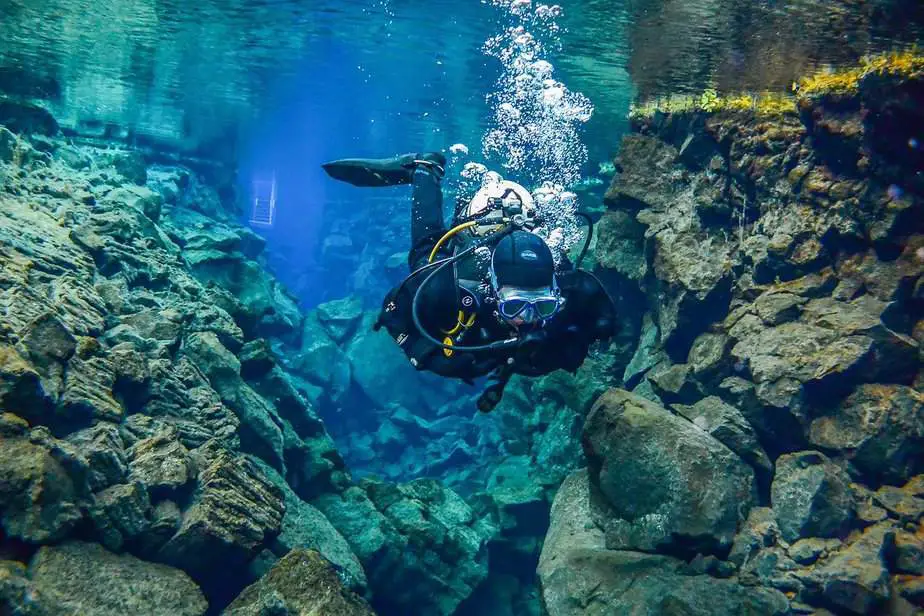
When diving with compressed air, what we are actually breathing is a mixture with a concentration of 21% oxygen, 78% nitrogen, and 1% other gases (mostly argon and carbon dioxide). There are various other constituent gases within that 1%, however the amounts are so small as to be negligible.
Generally, the area of focus is in the oxygen and nitrogen concentrations. As you can see, nitrogen is the single largest constituent in air, far outnumbering the other gases combined.
When we inhale, our lungs will use up some of the oxygen in air as part of the process to convert food in our stomach into energy (called metabolism). Carbon dioxide is the resulting waste product from that process, and we can find some amount of it in the air we exhale.
So when we inhale, the air we breathe is 21% oxygen and 79% nitrogen, but when we exhale, the air has, say, 16% oxygen, 79% nitrogen, and 4% carbon dioxide. You’ll notice that oxygen was used, carbon dioxide was produced, and the nitrogen percentage stays the same since our bodies don’t use it.
Why then does nitrogen accumulate in the body if we don’t use it? Nitrogen is a type of inert gas, meaning we can fully exhale it after inhaling it. However, all gases we breathe, nitrogen included, gets dissolved into our blood and eventually enters all of our tissues.
Since nitrogen is not used by our metabolism, as long as there are no changes to the air pressure, the gas will be at an equilibrium. In other words, what is dissolved into the blood matches the pressure around us.
Having this equilibrium where nitrogen is absorbed into our blood and tissues is normally not a problem at all and quite normal. It’s a different story when we head underwater and the pressure increases.
How pressure affects nitrogen
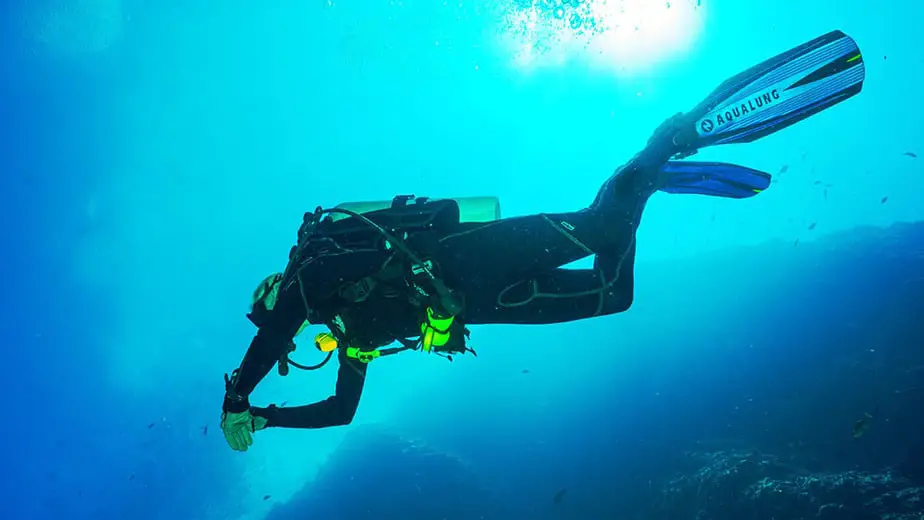
In our normal day to day life, the air pressure we experience is relatively stable. Any changes to the air pressure is usually minor and happens slowly, so the equilibrium balances itself quickly.
Even if we travel up a mountain to do some altitude diving, for example, the drive up the mountain is gradual, but some of the absorbed nitrogen will get released from our tissues due to the decreased pressure.
Going to a modest altitude is dangerous immediately after diving because there is still an excessive amount of nitrogen in our tissues that will rapidly come out, causing decompression sickness. That’s why you shouldn’t fly after diving.
When scuba diving, the change in pressure is so drastic and sudden that our bodies can absorb so much nitrogen and cause it to be released almost as quickly which can result in the bends. For reference, every 10 m / 33 ft a diver descends, the water pressure increases by 1 bar.
At the surface the pressure is 1 bar, and once a diver has descended to 40 m (which is the maximum depth limit for recreational diving), the pressure is at 5 bar which is 5 times the pressure compared to at the surface.
In order for a diver to safely breathe the compressed air in their tank, they use a regulator which takes the high-pressure air and reduces it to the ambient pressure which varies depending on the depth.
If the regulator didn’t do this then you wouldn’t be able to inflate your lungs; the immense water pressure would make it impossible to inhale. It’s also the same reason why you can’t breathe using a long snorkel. Even more importantly, if the air pressure was not reduced by the regulator, the sudden release of pressure would damage your lungs.
Next, as you dive deeper and the water pressure increases, the air inside your tank gets compressed and its volume decreases. The air becomes more dense, meaning the gas molecules are more closely packed together and there are more of them in a given volume. The percentage of gas remains the same, however they are much more dense.
Since nitrogen is naturally a large portion of air and therefore a large part of the total pressure, the pressure it has is referred to as its partial pressure. Since the air has become so dense, each breath you take contains more oxygen and nitrogen molecules per breath.
Accordingly, your body will absorb more oxygen molecules which increases the risk of oxygen toxicity, and absorb more nitrogen molecules which increases the risk of nitrogen narcosis at deep depths and decompression sickness on the ascent.
The amount of nitrogen in your body keeps building up until it reaches a state of equilibrium if you stay at a constant depth long enough. We call this saturation.
Where is the nitrogen stored in the body?
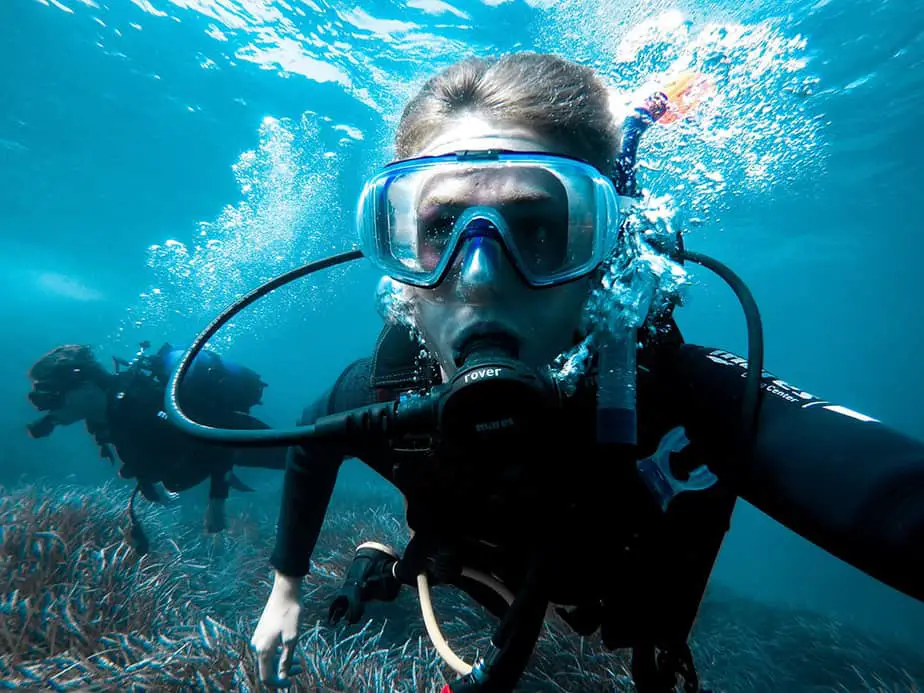
Nitrogen can build-up everywhere in your body because it is absorbed into the blood and tissues when exposed to a higher gas partial pressure underwater. The rate at which the nitrogen is absorbed depends on the type of tissue and the water pressure.
It is currently still not fully known how inert gases are absorbed into the body, and scientists are working hard at identifying every mechanism by which it works. With that said, we know that “fast” tissues like blood and nerve tissues absorb nitrogen and reach saturation faster than “slow” tissues such as bone and fat.
Given a long enough time spent underwater, theoretically all body tissues can become fully saturated with nitrogen.
Does everyone absorb nitrogen equally?
Nitrogen will build up in each person’s body at different rates due to the difference in body compositions as well as their circulatory system’s effectiveness.
Dive computer algorithms and dive tables are designed using scientific models that take into account this difference in body composition as much as possible, often erring on the side of caution by providing conservative estimates when it comes to NDL and decompression times.
The algorithms have been refined to the point that it is regarded by the diving community as safe enough to use for a wide variety of divers and still remain safe.
With that said, perhaps some dive computer manufacturers are erring a little too much on the side of caution. For instance, Suunto dive computers have become infamous for how quickly they go into deco mode. Jokes are often made at its expense that even briefly rinsing Suunto dive computers will cause them to exceed the NDL.
Lastly, people who are not as physically fit or have higher body fat percentage may be more susceptible to decompression sickness.
Why do scuba divers use nitrogen?
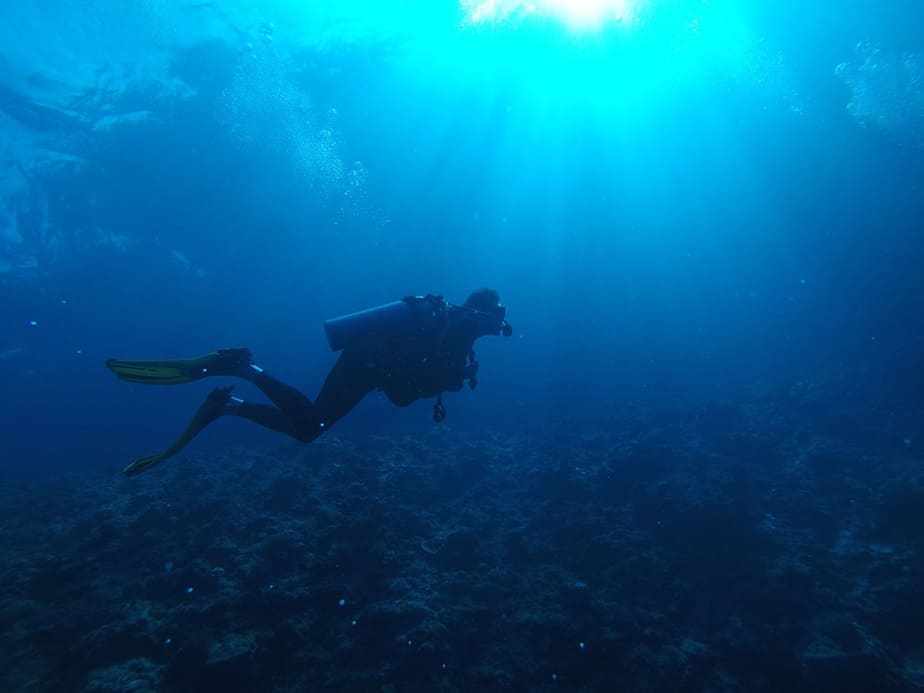
Nitrogen is of no use to scuba divers. It just so happens that air is mostly composed of nitrogen, however we only utilize the oxygen in the air, not the nitrogen.
In fact, nitrogen is the primary cause of many scuba diving problems. At depths of 30 m / 100 ft or more, it can cause nitrogen narcosis which can impair coordination and judgment. The narcosis itself is not deadly, but the poor judgment divers exhibit while impaired certainly is.
So why don’t we strip out all of the nitrogen and just breathe pure oxygen? That sounds like it’d be a good idea, right? Unfortunately, that is a terrible idea. There are many issues with this, and the biggest one is that too much oxygen can result in oxygen toxicity which can be deadly. It appears that too much of any one thing is bad.
Furthermore, it is extremely expensive to produce a gas that doesn’t have any inert nitrogen to fill up most of the space, so it’s impractical for recreational divers to use.
Since the concentration of nitrogen in air becomes an issue when diving beyond 30 m, technical divers will replace part of the nitrogen in their gas mix with helium. Thus, they are diving with some combination of oxygen, nitrogen, and helium, and this is known as trimix.
Helium is arguably the safest gas to breathe because it does not cause any kind of narcosis and allows divers to dive deeper and longer than ever before.
With that said, like nitrogen, helium is an inert gas that can build up in the tissues and needs to be safely removed with decompression procedures. Due to helium’s versatility and limited quantities, they are expensive as well.
A good mix between compressed air and trimix is enriched air nitrox. In nitrox, some of the nitrogen is replaced with more oxygen so that divers can dive for longer before reaching their NDL.
However, due to the extra oxygen content found in nitrox, you cannot dive as deep with it compared to compressed air because it will cause oxygen toxicity faster. Nitrox is a relatively low cost and effective way for divers to get less nitrogen in their body.
Can you decrease nitrogen absorption by descending quickly?
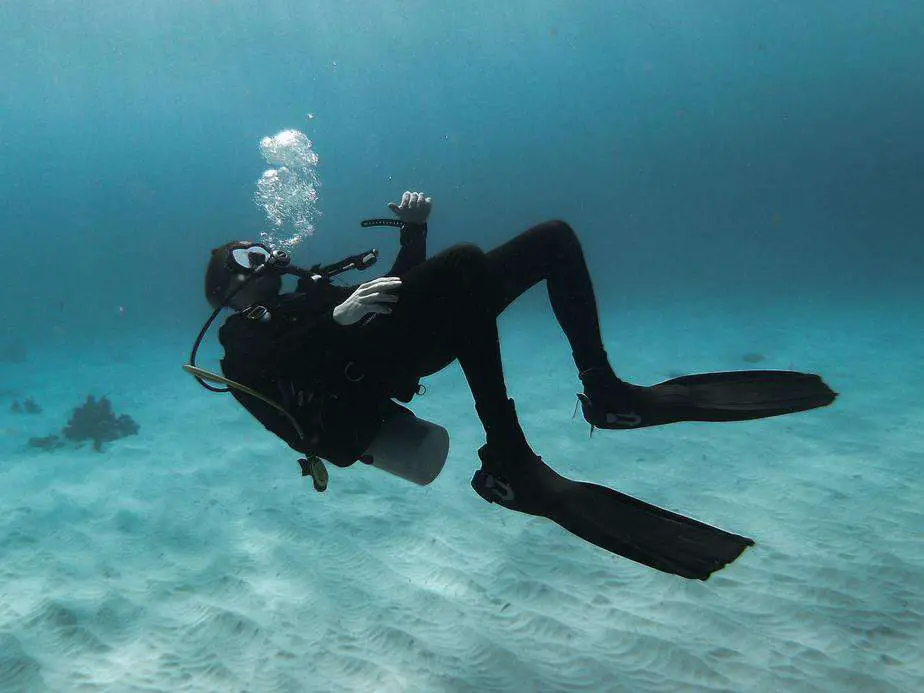
The best way to do what you want to do underwater before nitrogen becomes an issue is to descend quickly. If you take too long to descend, nitrogen is being absorbed into your tissue the whole time, plus you’re using up your breathing gas, and ultimately you will have less time to spend at your planned depth.
Within reason, as long as you are carefully controlling your buoyancy, equalizing early and often, and staying with your dive buddy, then descending as fast as you safely can will help you to maximize your time at the target depth.
Keep in mind that the two major factors that determine nitrogen build-up rate are depth and the time you spend there.
Your dive computer will accordingly track your nitrogen buildup and your NDL whether you descend quickly or slowly. In practice, you’ll find that descent rate does not affect the build-up of nitrogen in your body by any significant amount.
However, reaching the target depth faster means you have more breathing gas to spend more of your time at deeper depths rather than traveling to and from the surface.
How does nitrogen form bubbles during the ascent?
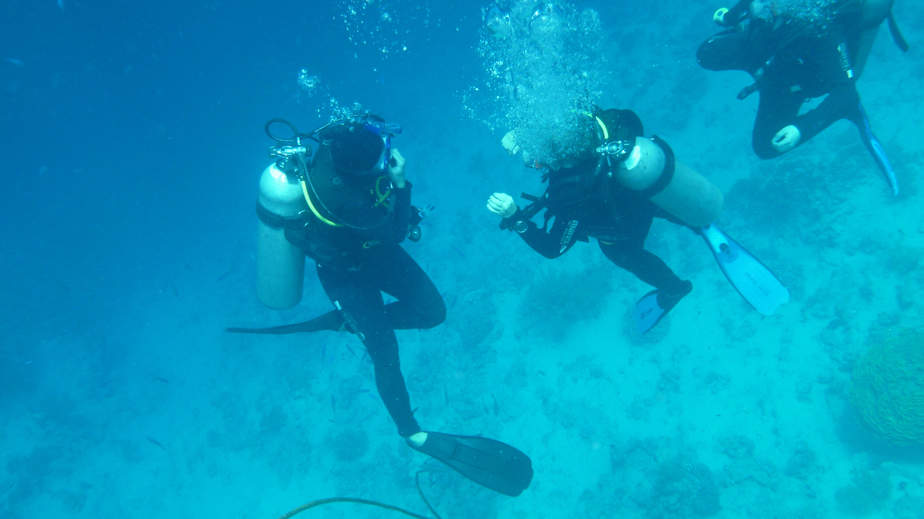
When you take the Open Water Diver course, you’ll hear that you should ascend slowly to avoid decompression sickness so much that it’ll be hammered into your head. If it hasn’t yet, then it’s our job to keep reminding you. But how exactly does this happen?
We’ve discussed how the water pressure causes nitrogen to be absorbed into our tissues. Absorption will keep occurring until the tissue is saturated and is in equilibrium, or until the diver descends even deeper, or they begin to ascend and the pressure starts to reduce.
For recreational diving, the decompression models used by dive computers and dive tables are designed so that as long as divers are still within their no-decompression limit, they can ascend directly to the surface. (Note: It is still generally recommended that all dives should have a 1-3 minute safety stop 3-5 m from the surface).
Staying within the NDL means that our tissues have not absorbed a significant amount of nitrogen and that during a slow ascent, enough nitrogen will be released such that there will be no risk of decompression sickness at the surface.
Even if one stays under their NDL but they ascend too quickly, or they exceed their NDL and fail to perform their decompression stops, that’s when nitrogen can start to form bubbles during the ascent and this can be deadly.
How come bubbles form during the ascent when scuba diving, is normally not a problem when we go on an airplane or up a mountain? Well, if you were recently scuba diving, then yes, it is definitely an issue to go to a high altitude after diving.
However, when scuba diving specifically, our tissues will absorb more nitrogen than the gas we are breathing, and it becomes supersaturated. Under normal circumstances, when one goes to a higher altitude, the low amount of nitrogen in our tissues is carried away in a controlled way and eventually exhaled.
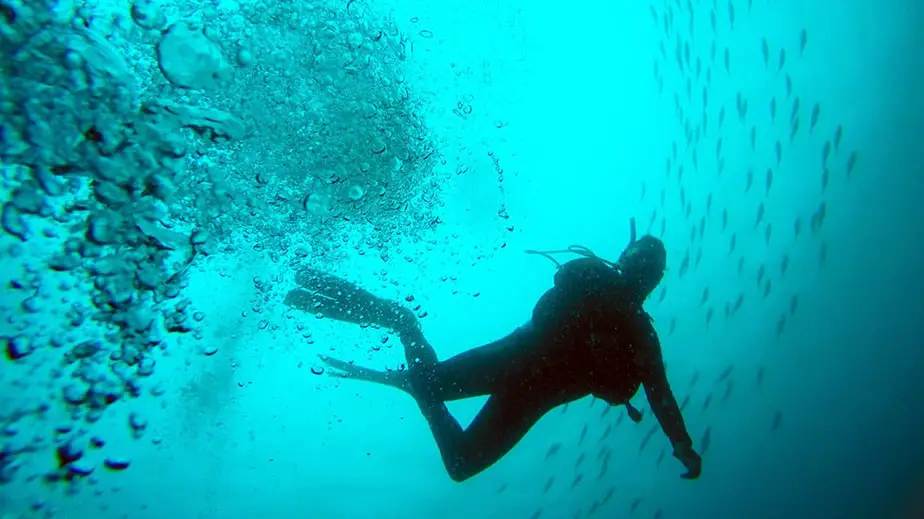
If the tissues become supersaturated with nitrogen, then when a diver goes to a lower pressure environment (i.e. as they ascend to a shallower depth) then nitrogen is released at too fast a rate and it causes bubbles to form. The bubbles can be released basically anywhere in the body, typically accumulating around the joints, however it can also appear in the brain or spine which can be fatal.
Common signs of DCS can be mild, such as bent joints and skin rash, or it can be more severe such as loss of vision and vision, unconsciousness, paralysis, and even death.
Divers must do everything in their power to avoid getting the bends. They should dive conservatively and stay well under their no-decompression limits. Treat each dive like a decompression dive and do a 3 minute safety stop a few meters from the surface before ascending. This gives the body some time to off-gas so that the chances of getting bent are non-existent.
Pay close attention to your dive computer. It will provide several useful warnings, including an ascent rate exceeded warning if you are ascending too quickly. If your dive computer has the option, make it vibrate, beep, glow, whatever it possibly can to get your attention whenever you’ve committed a safety violation.
Just as important as knowing what to do is knowing what to avoid before diving. For example, do not drink alcohol, smoke, stay up late, or dehydrate yourself before diving. Furthermore, being out of shape or obese can contribute to decompression sickness.
Even after you’ve safely surfaced from a dive, you’re not free and clear yet. There will still be nitrogen left in your tissues that takes some time to fully release from your system. If you’re doing multiple dives in a day, your dive computer will also calculate your surface intervals so that your body has time to decompress.
In the case of repetitive dives, you’ll find that your no-decompression time will keep getting reduced on subsequent dives because the nitrogen in your system hasn’t fully off-gassed.
Are there other gases to worry about besides nitrogen?

Indeed, all gases you breathe under pressure will accumulate in the body until they reach partial pressure equilibrium with the ambient pressure and the tissues are saturated. Even oxygen can be dangerous in high concentrations.
The reason why nitrogen is such a big deal is because it’s found in air in such large concentrations, plus the fact that it is inert. When one inhales air, some of the oxygen is metabolized and its partial pressure is low enough that it won’t cause decompression problems before nitrogen.
Other inert gases used instead of nitrogen, such as helium to reduce narcosis, have the same problem. Helium also has to be carefully released through a slow and controlled ascent.
So regardless of the type of gas mix you use, you need to give your body time to decompress and ascend slowly to avoid the bends.
Parting words
Even though nitrogen is naturally found in air, it has the potential to cause problems for scuba divers that dove too deep or too long. There is a reason why the Open Water Diver certification only has a maximum depth limit of 18 m / 60 ft. Diving too deep may result in narcosis and will cause a diver to reach their no-decompression limit very quickly.
For this reason, the limits imposed on that certification helps divers dive sensibly and safely. Divers should also try to be well-hydrated, well-rested and up-to-date on safe diving procedures so that they can stay safe during a dive. As long as you’re cautious, there’s no reason why a recreational diver should be concerned about nitrogen building up to dangerous levels in their body.
If you are not a fan of how nitrogen can limit your dives, then you need to take the Enriched Air Nitrox Diver course or the Trimix Diver course to get access to new skills and tools to get around the limitations nitrogen places on you.
Today, decompression diving has almost become an exact science with all of the tools and data we have available. The decompression models in dive computers have gotten so accurate that it’d be foolish not to use it on a dive. It’s also foolish not to heed its warnings, so as long as you know your limits and adhere to basic diving principles (and dive computer warnings), then you should be fine.


